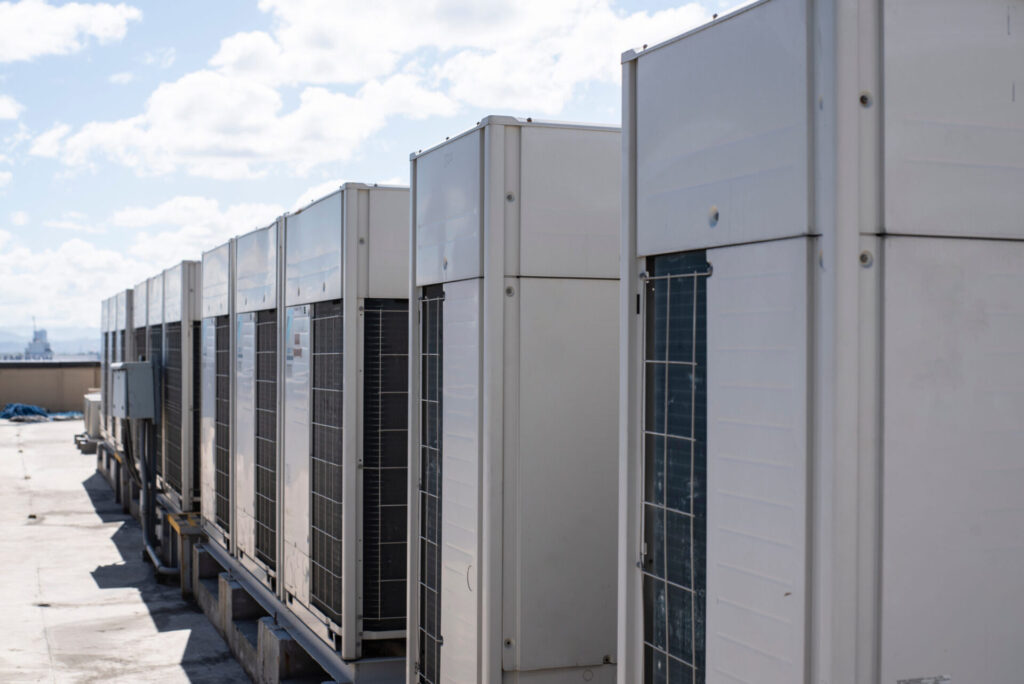
Chiller System vs. VRF System
Chiller System vs. VRF System: Choosing the Right HVAC Solution for Your Building
In commercial and industrial HVAC systems, two popular options stand out: chiller systems and VRF (Variable Refrigerant Flow) systems. Both offer unique advantages and cater to different needs, making the decision between them crucial for building owners and managers. Let’s explore the key differences between these systems and determine which one might be the perfect fit for your clients’ needs.
Chiller System: Reliable Cooling Powerhouse
Chiller systems have long been the workhorses of large-scale cooling applications, offering reliable and efficient cooling solutions for buildings of all sizes. These systems operate by chilling water or a secondary refrigerant and circulating it through a network of pipes to cool indoor spaces. Here are some reasons why chiller systems remain a top choice for many clients:
- Proven Performance: Chiller systems have a track record of proven performance in providing consistent and reliable cooling even in the most demanding environments. Their robust design and ability to handle high cooling loads make them ideal for large commercial buildings, industrial facilities, and critical infrastructure such as data centers.
- Energy Efficiency: Despite their size and power, modern chiller systems are highly energy-efficient, thanks to advancements in compressor technology, variable speed drives, and intelligent controls. By optimizing energy usage and minimizing waste, chiller systems can help clients reduce operating costs and achieve sustainability goals.
- Longevity and Durability: Chiller systems are built to last, with components designed for durability and reliability. With proper maintenance and servicing, these systems can provide years of trouble-free operation, offering clients peace of mind and a solid return on investment.
VRF System: Flexible Zoning and Energy Savings
On the other hand, VRF systems offer a more decentralized approach to HVAC, allowing for individual zone control and greater flexibility in heating and cooling operations. These systems use a single outdoor condensing unit to connect multiple indoor fan coil units, each serving a specific zone or area within the building. Here’s why VRF systems might be the perfect choice for certain clients:
- Zoning Flexibility: VRF systems excel in applications where zoning flexibility is paramount. By independently controlling the refrigerant flow to each indoor unit, these systems can maintain different temperatures in various zones simultaneously, optimizing comfort and energy efficiency.
- Space-saving Design: VRF systems require minimal ductwork, making them ideal for retrofit projects or buildings with limited space for HVAC equipment. Their compact size and modular design allow for easier installation and reduced construction costs, particularly in urban or high-rise buildings.
- Energy Efficiency: VRF systems are inherently energy-efficient, thanks to their variable-speed compressors and precise temperature control capabilities. By matching cooling and heating output to the actual load requirements of each zone, VRF systems minimize energy waste and help clients achieve lower utility bills.
Choosing the Right System
Ultimately, the choice between a chiller system and a VRF system depends on various factors, including the size and layout of the building, cooling, and heating requirements, budget considerations, and client preferences. While chiller systems offer unparalleled reliability and performance for large-scale applications with so many application fields (Industry, manufacturing facility, cooling equipment, etc), VRF systems provide greater flexibility and efficiency in zoning and energy management and limited application fields.
As HVAC professionals, it’s essential to assess each client’s unique needs and tailor the HVAC solution accordingly. By understanding the benefits and trade-offs of both chiller systems and VRF systems, you can help your clients make informed decisions and ensure the optimal comfort and efficiency of their buildings.
In conclusion, whether it’s the robust reliability of a chiller system or the flexible zoning capabilities of a VRF system, there’s a perfect HVAC solution out there for every client.


